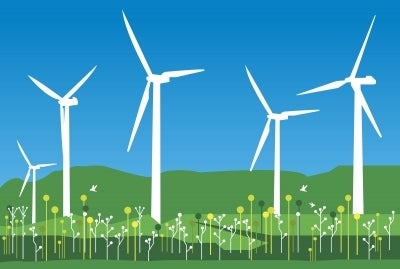Wind power has always had a blustery outlook in Massachusetts. Yet despite large upfront costs and issues in finding appropriate locations, wind still represents a valuable resource of alternative energy in the interior of the state — including Central Massachusetts, according to experts.
The largest potential for wind power in Massachusetts has always been in offshore projects that can access strong, sustained winds, according to Jim Manwell, director of the Wind Energy Center at the University of Massachusetts Amherst.
Cape Wind was supposed to access this potential with 130 wind turbines off the coast of Nantucket. But after National Grid and Eversource Energy ended their contracts with the project’s developers to buy some of the power, the potential for large-scale wind power in Massachusetts has hit a speed bump.
Yet despite large upfront costs and issues in finding appropriate locations, wind still represents a valuable resource of alternative energy in the interior of the state — including Central Massachusetts, according to experts.
Before the end of federal wind tax incentives in 2013, there was a wind-turbine construction boom in Massachusetts, said Catherine Finneran, senior director for renewable energy generation at the Massachusetts Clean Energy Center (MassCEC), a state agency that oversees public funding for alternative energy projects. The number of wind projects in the state climbed from three in the early 2000s to 45 completed undertakings. Together, they generate 107 megawatts of electricity, enough to power 32,000 households for a year.
Following the loss of the incentives, interest in similar projects has cooled somewhat, Finneran said.
But wind projects are still eligible for renewable energy credits (RECs) that can be sold to organizations looking to balance their energy portfolios, said Katie Gronendyke, spokeswoman for Massachusetts Executive Office of Energy and Environmental Affairs. The two turbines at Mount Wachusett Community College in Gardner not only cover all of the school’s electricity needs, they pump some power back into the grid while bringing in about $200,000 a year to the college through the sale of RECs, according to Robert LaBonte, the school’s vice president of finance and administration.
“It is a cost-effective technology if you have the right site and the right wind resource, but it is very site-specific and the wind resource has a lot to do with the economics of the project,” Finneran said.
The projects in Central Massachusetts that were built during the boom are now pumping clean, renewable energy back into the communities where they sit. When the Templeton Light Co. wanted to expand its renewable energy base, the public utility turned to a wind turbine in 2010. Five years later, the wind turbine has produced 7,438 megawatt hours of electricity, enough to power 2,454,540 homes for one hour.
The main benefit to the wind turbine is that it churns away all year and is actually most productive during the winter, said John Driscoll, general manager at Templeton Light. While the summer months have traditionally put a strain on the power grid, the winter months have become an issue with gas-fired electricity plants raising the cost of energy.
“You can only count on solar when the sun is out,” he said. “The wind turbine has the potential to run every hour of the year … I would rather have the turbine spinning in January than have the solar in July.”
Challenges
Wind power faces unique challenges in Massachusetts, starting with the state’s geography. The areas with the biggest capacity for wind power are often located near more densely populated areas, but that leads to local opposition, said Manwell. Yet, wind power is also viable in areas with high, sustained winds, generally along the coast or the Worcester hills and the Berkshires, Gronendyke said.
Also, a large, initial financial outlay is needed for wind projects. Templeton’s turbine cost the organization $3.8 million, with an expected payback of nine to 14 years. But that has been extended by the recent drop in energy costs, Driscoll said.
“Wind projects take a long time. They are large projects … and can be tens of millions of dollars for even a community-sized project,” Finneran said.
However, the greatest challenge to wind projects may lie in solar, whose equipment doesn’t have to reach into the sky, thus reducing perceived impact on neighbors.
Lease deals with solar companies allow landowners to have solar power placed on their properties without the increased upfront cost of a large wind project. Solar has also had great success since the establishment of additional state support in 2010 through the RPS Solar Carve-Out incentive program.
“This is not meant to be a shift away from wind, but solar is generally much easier to site across the commonwealth,” Gronendyke said.
Unlike wind, solar projects can be scaled up, yet smaller projects still provide viable payback and power. The state currently has 776 megawatts of installed solar power, according to Finneran.
“We have seen a lot of solar development over the past 5 to 8 years and prices on solar have come down significantly, so it is an affordable option,” she said, acknowledging that wind prices have come down as well, but remain larger, more expensive projects. n

